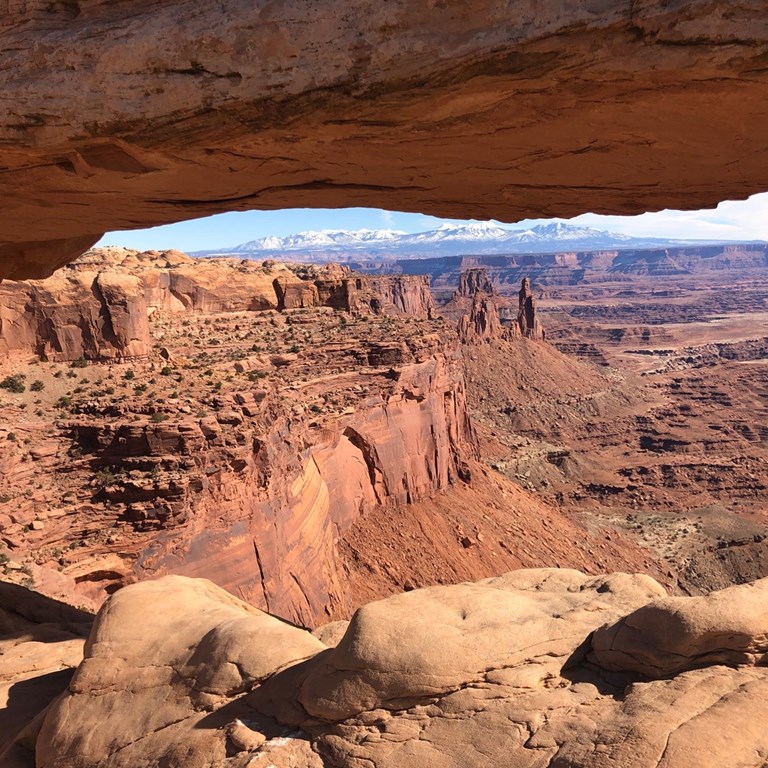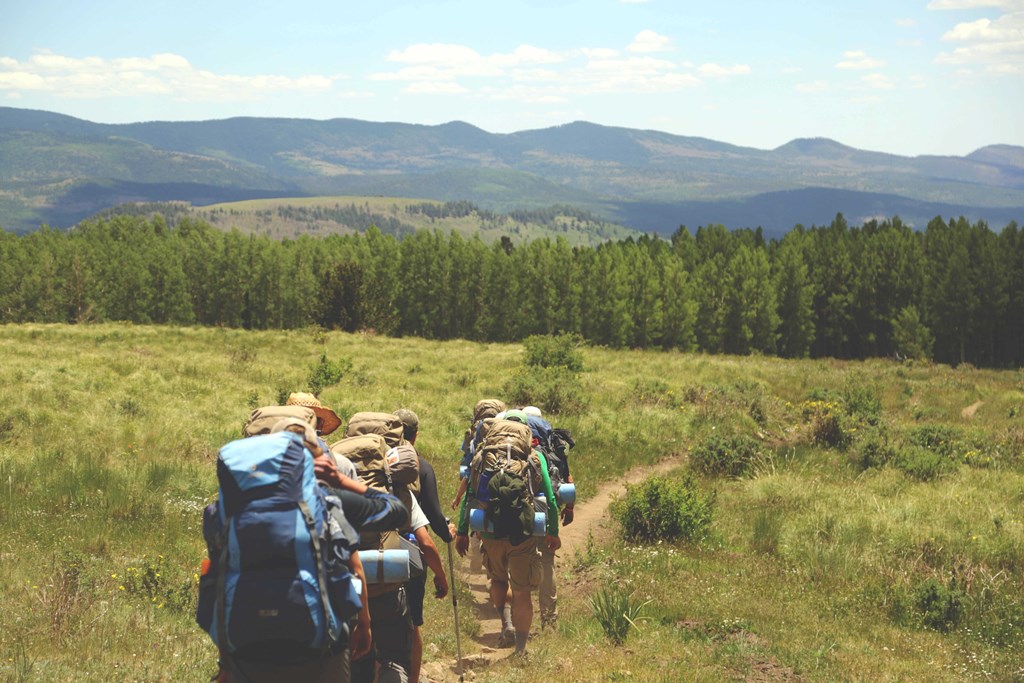Your cart is empty!
Make checkout easy by booking all your reservations at once. Add your sites from different campgrounds into your shopping cart* and then choose checkout.


When you’re camping, taking a hike on nearby trails is a great way to explore the terrain and get immersed in nature. But a hike into the unknown takes a little preparation to ensure a safe and fun experience.
The Mountaineers organization of expert hikers created a list of ten essential categories to pack items from for all hiking outings. The following list of suggested items to pack for a day hike can be adjusted to make sense for the weather and conditions you might encounter on your journey.
We’ll also review how to pack the necessary items for easy access inside your backpack. Make sure you’re starting on the right foot by wearing comfortable hiking boots with lots of treads to support your most important tools—your feet!
Of course, you’ll want to avoid getting lost. A paper trail map of the area will help keep you oriented, and a hand-held compass will point you in the right direction. If you lose your way or experience an emergency, send an SOS via a GPS personal locator beacon to alert rescuers of your whereabouts.
Eliminate ultraviolet light by packing sunglasses, a wide-brim hat, and sunscreen. Pack a cooling neck wrap or bandana to wick away sweat on warm days. Wearing a long-sleeved shirt and long pants will help protect your skin from sunburn and, as a bonus, protect from bug bites and scratches from prickly plants.
Depending where and the time of year you’re hiking determines how many clothing layers to wear and pack. Bring a lightweight insulated jacket and a light rain jacket if it is cool and wet out. Or if it’ll be downright frigid, bring a change of long underwear, wool or moisture-wicking socks, gloves, and a warm hat.
If the plan to be back at camp by dark doesn’t quite happen, having a light source with you is vital. Flashlights or lanterns work but using a headlamp will keep your hands free on the trail. Pack fresh batteries to keep the lights going strong.
Start with a pre-made first-aid kit and add things you might need, like elastic bandages, ankle or knee brace, and bug repellent. Toiletries fall under this category, like hand sanitizer to clean up on the go. Baby wipes, toilet paper, and waste collection bags are a must.
You aren’t planning on starting a fire when you go on a simple day hike. But in an emergency situation, you might need a fire to cook, to use as an emergency signal, or for warmth. Packing a butane lighter is the simplest way to prepare for these scenarios.
You can purchase pre-made outdoor repair kits stocked with items like duct tape, splints, a whistle, a signaling mirror, fishing wire and hooks to mend hiking equipment and survive the night. Pack a multi-tool pocket knife to serve food, shave fire kindling, and do gear repair. Bring items to repair equipment specific to your activities on the hike. And it’s essential to have a water collection bag and filter to purify water in case your supply runs low.
Stopping for lunch on the trail should be a trip highlight. Make a sandwich you’ll look forward to eating, and bring some fun treats like potato chips and candy. Bring extra snacks that don’t need to be cooked, like trail mix, energy bars, and jerky.
Load your pack up with water. Drink before you feel thirsty, and sip about a half liter of water per hour. For a four-hour hike, you’d need two liters of water, half a gallon, per person. Pack two 32-ounce water bottles or a 64-ounce water bladder.
On a day hike, you aren’t planning to be on the trail at night, but emergencies happen. Bring a lightweight tarp, bivy sack, or space blanket to protect yourself from severe weather or nighttime conditions. Shelter inside or under them to generate warmth if you get stuck away from camp.
Now that you have everything together, it’s time to organize them in your hiking backpack. At the bottom of your pack, place the items you probably won’t need to pull out but are essential to have with you in case of emergency—think repair kit, shelter, and extra clothes. Keep things you’ll most likely need during your hike in the middle of the pack, like protective gear and light jacket. At the top of your bag, stow food items you don’t want to get squished. And keep water bottles in the backpack’s exterior mesh holders, toiletries in outside pockets, and noisemakers at the ready.
Green River KOA Journey is a great base camp for exploring the outdoors! It is also perfect for your hiking trip along Utah's Mighty Five National Parks: Bryce Canyon, Canyonlands, Arches, Capitol Reef and Zion. Additionally, it’s a convenient stopping point along I-70 for travelers from surrounding areas like Denver, Las Vegas and California. After your daily outdoor adventures, you can stay at one of the Pull-Thru or Back-In RV Sites, Camping Cabins or Tent Sites, and make unforgettable memories with your family or friends. You can even book and rent an RV through our partnership with RVshare. You can also inquire about extended stay or group stay options to get the most out of your camping experience. Most of our sites have full hookups and many have a KOA Patio® to ensure you have a comfortable trip. At Green River KOA, you can enjoy these amazing features: basketball, horseshoes or pickleball, as well as a full camp store, dry storage, and more!
If you are looking for campgrounds in Green River, Green River KOA offers convenience and comfort for your stay. Book your site today!
That doesn't mean this area has to always be empty. When you start reviewing camping options, your history will display here to help compare sites and find the best stay. You will be able to share your stay information with friends or family and save it for a later time if you have a KOA Account.
Make checkout easy by booking all your reservations at once. Add your sites from different campgrounds into your shopping cart* and then choose checkout.